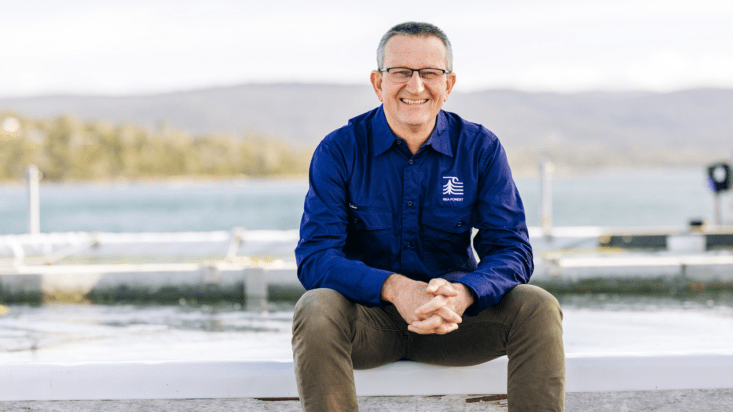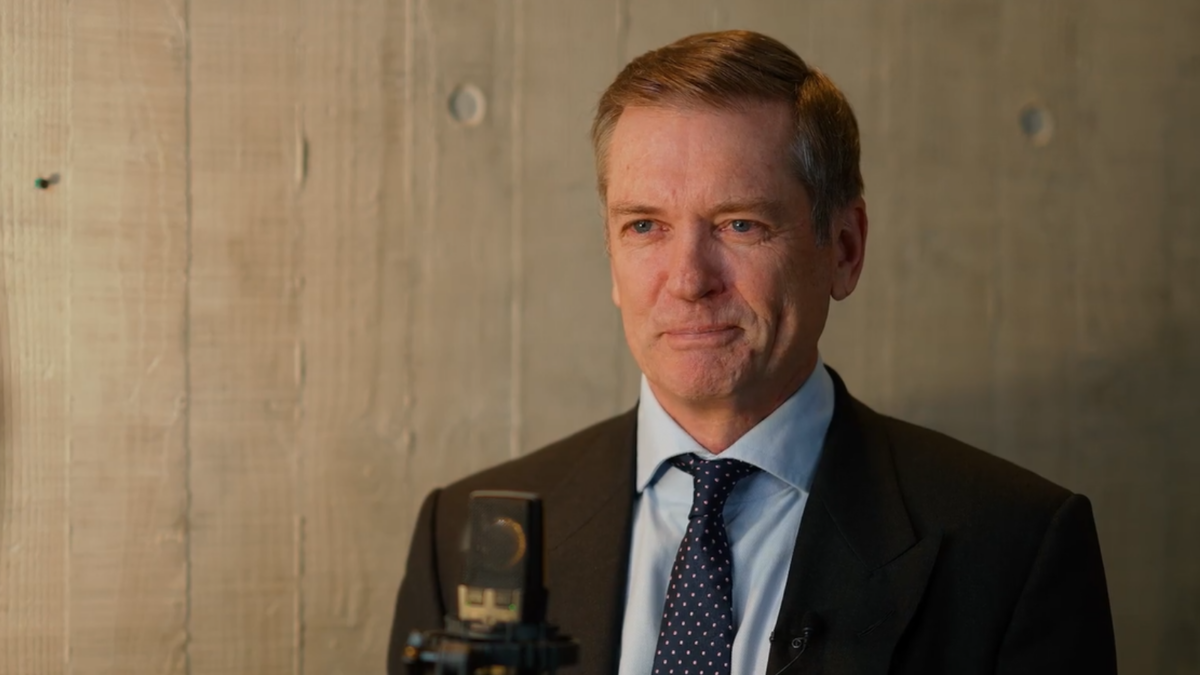ESG in action: Mr Seaweed and the incredible, Earth-changing bovine burp fix
When eco-tech founder Sam Elsom was trying to get a new climate change project off the ground in 2018, he needed someone with the scientific chops to figure out how to turn seaweed extract into a commercially viable supplement that could reduce methane in livestock emissions.
He wanted to change the nature of cow burps (and farts), which make up 30 per cent of global methane emissions and are a major contributor to global warming.
Elsom, who had earlier made his name in sustainable fashion, found what he was looking for when he reached out to Rocky de Nys, a professor of aquaculture at James Cook University in North Queensland.
“I’ve spent my career cultivating and understanding the chemistry and growth of seaweed,” de Nys (pictured) tells The Inside Adviser. “So yeah, I was Mr Seaweed.”
Before long, de Nys was living near the Sea Forest hub Elsom set up in Triabunna, Tasmania, serving as its chief scientific officer. Five years later, Sea Forest is known as the first company in the world to cultivate a red seaweed called asparagopsis at a commercial scale both on sea and land.
Knockout solution
Asparagopsis, native to Australian coastal waters, is not just any seaweed. It has a unique chemical makeup with active ingredients that can reduce methane expulsion in cows by an astonishing 90 per cent. Adding asparagopsis to cow feed not only inhibits methane (which has a global warming effect 28 times that of carbon monoxide), it does it without any effect on meat and milk quality or livestock productivity.
(de Nys was actually part of the team, funded by Meat and Livestock Australia, that discovered the unique properties of asparagopsis in 2012. During testing the compound “just flatlined all the instruments”, he says. “It just knocked everything out.”)
The solution has enormous potential as both an environmental wonder and a commercial venture. Elsom and the team were recently profiled on the ABC’s Australian Story and the team has been nominated for the 2023 Earthshot Prize, an organization founded by Prince William that awards a £1 million grant to five groups each year for their contribution to environmentalism. US ambassador to Australia, Caroline Kennedy, visited Sea Forest HQ last week and took a boat tour of the seaweed farm.
But there have been “arduous and painful” challenges involved in converting Sea Forest’s solution into a viable enterprise.
That’s because current government policy settings offer no incentives for farmers to abate methane emissions from livestock which means they have to wear the cost of buying Sea Forest’s feed supplement themselves. This has led to slow adoption of this exciting Australian climate science.
“In Australia asparagopsis doesn’t face any regulatory hurdles. It’s not a pharmaceutical, we’re talking about organic compounds in the seaweed that work on the bacteria in the rumen [the largest stomach compartment of the cow],” he explains. “So a solution like ours, whilst not a panacea, can play a really important role in the decarbonisation of Australian agriculture.”
The carrot and the stick
With methane emissions a high-priority environmental issue around the globe, policymakers are faced with two options; tax farmers on methane emissions or create a carbon credit system that rewards methane reduction. The stick, in other words, or the carrot.
New Zealand has decided to tax farmers, while the Dutch are making reductions in livestock production. Given Australia’s entrenched agricultural industry, de Nys explains, the Australian government is likely heading towards a scheme that rewards methane reduction with carbon credits that subsidise the cost of supplements like asparagopsis.
Yet creating a carbon credit system is a complex and drawn-out task. While the government works through a Gordian Knot of scientific and financial data to create the scheme, the Sea Forest team and farmers across the country remain in a holding pattern.
“A farmer can get a carbon credit if he plants a tree, but he can’t get one if he wants to make an immediate and meaningful dent in the greenhouse gas footprint of his cattle and sheep,” he says. “I appreciate it takes time to get the policy settings right, and the government is certainly making all the right noises, but the longer it takes the harder it will get for the government to achieve the emissions reduction targets in place.”
Asked if he thinks energy minister Chris Bowen is showing an appropriate sense of urgency with regards to the carbon credit scheme, de Nys says that while the delay is frustrating, he understands the barriers causing it. “It’s more an outcome of process than policy, but there is certainly a disconnect with the pace required to achieve Australia’s climate goals”, he says.
For now, de Nys and Elsom, together with managing director Stephen Turner, will continue honing the asparagopsis farming process while waiting for the government to catch up. Once it does, Sea Forest can grow its farming enterprise and reduce the cost of asparagopsis even further.
“The carbon credits delay is the headwind we’re fighting in terms of large-scale uptake of the technology,” he says. “The science has been done, and we’ve shown the cultivation can be done.”
*de Nys will be taking delegates of the The Inside Network’s 2023 ESG Conference on a tour of Sea Forest’s asparagopsis farming facility starting Monday, October 30.











